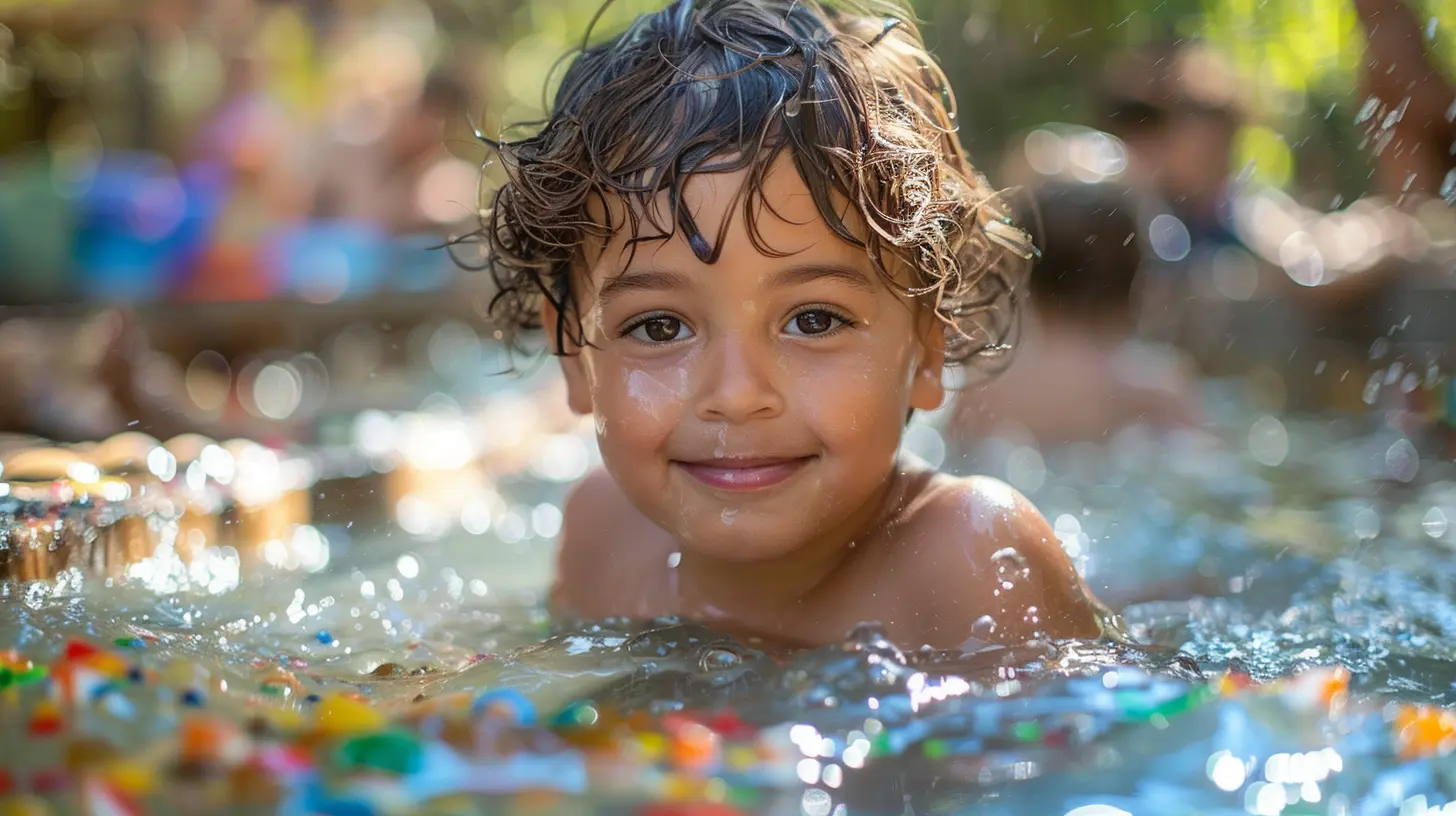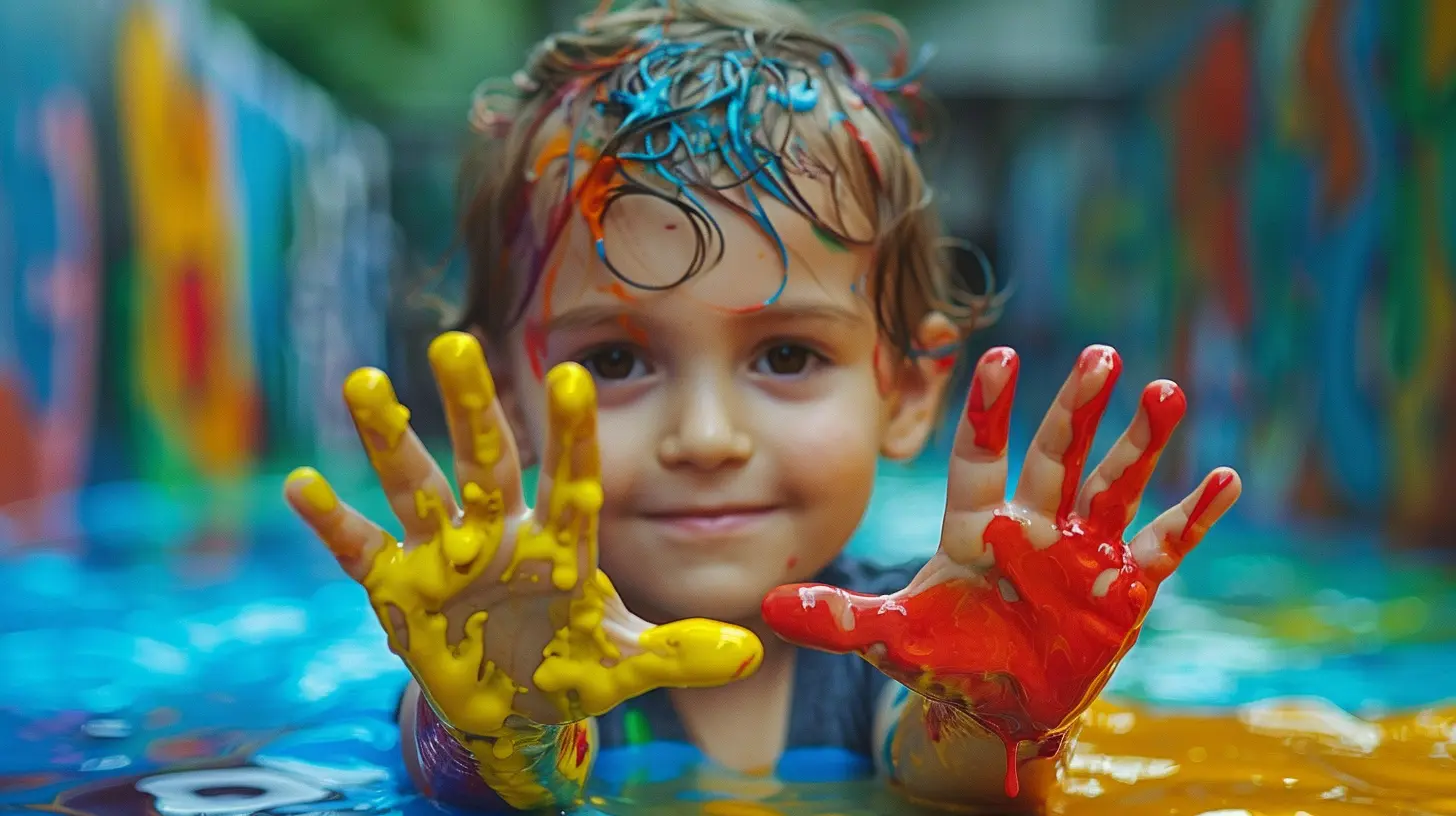The Science Behind Sensory Play: Why It Matters
26 August 2025
If your toddler has ever spent 30 glorious minutes squishing their fingers into a bowl of slime or giggled uncontrollably while splashing water all over the bathroom floor, then congratulations — you’ve already dipped your toes into the wonderful world of sensory play. But here’s the thing — while it might look like a gooey mess to you, that “mess” is actually your child’s brain hard at work.
So, what exactly is sensory play, and why is it such a big deal for your child’s development? Let’s roll up our sleeves and dig into the science behind it — without sounding like a textbook!

What Exactly Is Sensory Play?
Sensory play is any activity that stimulates your child’s senses — sight, sound, touch, taste, and smell. But we’re not stopping there. It also taps into movement (vestibular input) and body awareness (proprioceptive input). Think of it as the full-body, full-brain workout for kids.Whether it's finger painting, playing with kinetic sand, or walking barefoot on grass, sensory play helps kids make sense of the world — literally.

Why Is Sensory Play So Important?
Okay, so the mess is worth it — but why? What’s happening behind the scenes while your child digs into a bin of rice or stacks foam blocks in the tub?Spoiler alert: a lot is going on.
1. It Builds Better Brains
When your little one is engaged in sensory play, their brain is forming new connections. Neural pathways are being built and strengthened. It's kind of like when you upgrade your Wi-Fi — everything just moves faster and more efficiently.The more exposure children have to different textures, smells, and sounds, the more adaptable and responsive their brain becomes. This process is especially important during the early developmental windows, when brain elasticity is at its peak.
2. Enhances Cognitive Growth
Fun fact: problem-solving doesn’t only happen in math class. It also happens when your kid figures out how to pour water from one cup to another without spilling… much.Sensory play encourages kids to experiment, make predictions, test outcomes, and learn from their mistakes. All of this fuels cognitive development — the brain’s version of lifting weights.
3. Supports Language Development
You might not think that squishing playdough has anything to do with talking, but guess what? It totally does.When kids engage in sensory activities, they naturally start to describe what they're experiencing.
“It’s sticky!”
“It smells weird!”
“This is so soft!”
These descriptions help them build vocabulary and strengthen communication skills. Plus, when adults join in and ask questions like, “What does it feel like?” or “Can you find something that’s rough?” it adds another layer of language learning.
4. Boosts Motor Skills (Both Big and Small)
Digging, pouring, squeezing, pinching — sensory play is a goldmine for motor skill development.- Fine Motor Skills: Think small muscle movements. Activities like threading beads, using tongs, or drawing in sand help kids build the precise hand movements they'll need for writing and self-care tasks.
- Gross Motor Skills: Think big, whole-body movements. Sensory play like jumping into a ball pit or climbing on uneven surfaces helps develop balance, coordination, and strength.
5. Calms and Soothes
Some children (and let’s be honest, adults too) find sensory play incredibly relaxing. There’s something magical about calming textures, rhythmic movements, or repetitive actions like raking fingers through rice.For kids dealing with anxiety, sensory processing issues, or just an overload of emotions, sensory play can be a powerful tool for self-regulation.
6. Encourages Social Interaction
Sensory activities are a natural invitation to play together. Whether it's a sensory bin at a playgroup or a mud pie station in the backyard, these setups spark cooperation, taking turns, and shared giggles.Social skills don’t always develop in structured environments. Sometimes, the best teachers are water beads and shaving cream.

The Science Behind the Senses: A Quick Breakdown
Let’s break down how each sense plays its part in development during sensory play.Touch (Tactile Input)
This is the most common sense triggered during sensory play. From soft cotton balls to gritty sand, touch-based activities teach kids texture discrimination, object recognition, and even body boundaries.Ever notice how your child constantly touches everything? That’s their brain saying, “I want to know more!”
Sight (Visual Input)
Colorful materials, lights, and motion captivate infants and toddlers. Sensory play involving matching colors, watching swirling glitter, or tracking objects builds visual processing and attention skills.Sound (Auditory Input)
Banging pots might drive you up the wall, but that noise-making is sensory play in action. Instruments, echo tubes, and even listening to nature sounds help develop auditory processing and listening skills.Smell & Taste (Olfactory & Gustatory Input)
Playing with scented playdough or tasting different fruits expands kids’ sensory vocabulary. They learn to distinguish between sweet, sour, spicy, and more. This also helps with picky eating and food exploration.Vestibular Input (Movement & Balance)
Spinning, swinging, and rocking stimulate the vestibular system, helping kids understand balance and spatial orientation. Think: dizziness with a purpose!Proprioceptive Input (Body Awareness)
Jumping, pushing, pulling — these heavy work activities provide deep pressure input that grounds the body and helps with coordination. It's like giving the body a big sensory hug.
What Happens in the Brain During Sensory Play?
Imagine your child’s brain as a city with millions of roads. Now imagine every time they engage in sensory play, a new road is paved. These roads are neural pathways — connections that help the brain process information more efficiently.The more variety in play, the more roads are laid down. This not only helps with sensory processing but also with memory, attention, and emotional regulation.
Children who struggle with sensory processing (like those with Autism Spectrum Disorder or ADHD) especially benefit from sensory play, as it gently introduces new stimuli in a controlled and enjoyable way.
DIY Sensory Play Ideas (Without Wrecking Your House)
You don’t need a Pinterest-perfect spread or a dedicated sensory room. Sensory play can be simple, cheap, and still totally effective. Here are a few ideas the kids will love — and you won’t hate cleaning up.1. Homemade Slime or Oobleck
It’s gooey, stretchy, and oddly satisfying. Just use glue, baking soda, and contact solution for slime. For oobleck, mix cornstarch and water.Pro tip: Use a tray to limit the mess!
2. Rice or Pasta Sensory Bin
Dye some rice or pasta with food coloring and let your child scoop, pour, and dig through it. Add cups, spoons, and little toys for extra fun.3. Nature Walk Treasure Hunt
Collect leaves, pinecones, rocks — then come home and explore them with magnifying glasses, sort them by texture, or make natural art.4. Water Play Station
Fill a tub with water, add measuring cups, spoons, and waterproof toys. You can even make it themed — add bubbles, dye, or dish soap for a twist.5. Taste Test Challenge
Blindfold your child and have them guess different fruits or snacks. It’s a fun way to engage taste buds and talk about flavors and textures.
A Word on Safety
Always supervise sensory play, especially with toddlers who like to put everything in their mouths. Choose materials wisely, and when in doubt, stick to edible or natural items like cooked pasta, yogurt, or cheerios.Also, remember: Sensory overload is a real thing. If your child seems overwhelmed, it’s okay to pause and try again another day.
Final Thoughts: Let Them Get Messy
Sensory play isn’t just about fun — although that’s a huge bonus. It’s about building brains, developing bodies, and fostering emotional health. And yes, it often comes with a mess, but that mess is a masterpiece in the making.Let your child explore, squish, splash, and giggle. Let them be scientists in their own little way — forming hypotheses, running experiments, and learning from the world using all five senses (plus two!).
So the next time you find yourself stepping on a stray pom-pom or hosing off rainbow shaving cream from your porch, remember this: your child is learning more than you can imagine — one squish at a time.
all images in this post were generated using AI tools
Category:
Child DevelopmentAuthor:

Kelly Snow
Discussion
rate this article
1 comments
Emily Gill
This article beautifully highlights the importance of sensory play for children's development—thank you for sharing these insights!
September 5, 2025 at 3:55 AM

Kelly Snow
Thank you for your kind words! I'm glad you found the insights valuable. Sensory play truly is essential for children's development!


